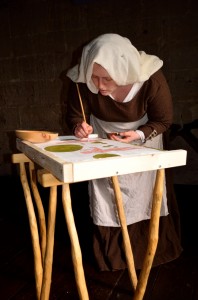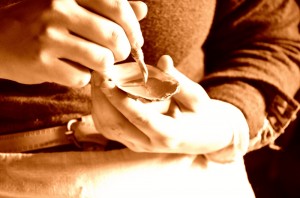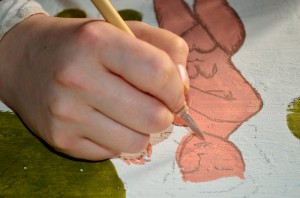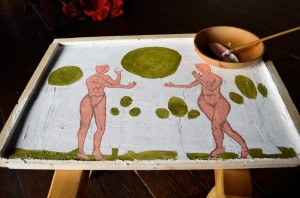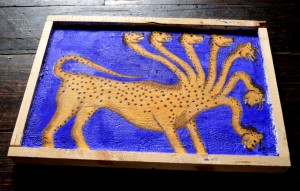Painting Secco
Secco is a very close affiliate to the technique of the Fresco buono in medieval times and is one of two common techniques for mural paintings.
Fresco has to be done on a fresh wall plastering within 24 hours of the application – while the plastering is still wet – and therefor requires a large amount of professionality, working speed, skill and experience. Since not only the painting is complicated but also the preparation of the grounds, pigments and compostion of the painting, it also takes quite some time to finish. The 24 hour period to lock the pigment into the mural is not always possible to cling to in medieval times. Therefor most medieval murals are a mixture of both techniques. The rough structure is done in fresco and the details and retouches in Secco (on purpose or not…).
Today we often find murals in which only these rough structures bound to the plastering have survived and the fine details in Secco have faded. A very good example of almost pure Secco murals can be found in the Viennese “Tuchlauben” alley, the “Neidhartfresken”.
As plastering lime mixed with sand and water is used in 2 layers, afterwards the pigments are being applied with either casein, egg tempera, lime water or even bees wax (encaustic).




